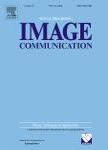版权所有:内蒙古大学图书馆 技术提供:维普资讯• 智图
内蒙古自治区呼和浩特市赛罕区大学西街235号 邮编: 010021

作者机构:Univ Texas Austin Dept Elect & Comp Engn Lab Image & Video Engn Austin TX 78712 USA
出 版 物:《SIGNAL PROCESSING-IMAGE COMMUNICATION》 (信号处理:图像通信)
年 卷 期:2013年第28卷第8期
页 面:870-883页
核心收录:
基 金:National Science Foundation [CCF-0728748] Intel Cisco corporation under the VAWN program Div Of Information & Intelligent Systems Direct For Computer & Info Scie & Enginr Funding Source: National Science Foundation
主 题:Stereoscopic quality 3D quality Quality assessment datatabase
摘 要:Stereoscopic/3D image and video quality assessment (IQA/VQA) has become increasing relevant in today s world, owing to the amount of attention that has recently been focused on 3D/stereoscopic cinema, television, gaming, and mobile video. Understanding the quality of experience of human viewers as they watch 3D videos is a complex and multi-disciplinary problem. Toward this end we offer a holistic assessment of the issues that are encountered, survey the progress that has been made towards addressing these issues, discuss ongoing efforts to resolve them, and point up the future challenges that need to be focused on. Important tools in the study of the quality of 3D visual signals are databases of 3D image and video sets, distorted versions of these signals and the results of large-scale studies of human opinions of their quality. We explain the construction of one such tool, the LIVE 3D IQA database, which is the first publicly available 3D IQA database that incorporates true depth information along with stereoscopic pairs and human opinion scores. We describe the creation of the database and analyze the performance of a variety of 2D and 3D quality models using the new database. The database as well as the algorithms evaluated are available for researchers in the field to use in order to enable objective comparisons of future algorithms. Finally, we broadly summarize the field of 3D QA focusing on key unresolved problems including stereoscopic distortions, 3D masking, and algorithm development. (C) 2012 Elsevier B.V. All rights reserved.